|  | | 11 Beaches with an E. coli Advisory:
Backbone Beach (Dundee, Delaware County, IA)*
Beed’s Lake Beach (Hampton, Franklin County, IA)*
Black Hawk Beach (Lake View, Sac County, IA)*
Denison Beach (Black Hawk Lake, Lake View, Sac County, IA)*
Lake Darling Beach (Brighton, Washington County, IA)*
Lake Manawa Beach (Council Bluffs, Pottawattamie County, IA)*
Lake of Three Fires Beach (Bedford, Taylor County, IA)*
Lewis and Clark Beach (Blue Lake, Onawa, Monona County, IA)*
Lower Pine Lake Beach (Eldora, Hardin County, IA)*
Prairie Rose Beach (Harlan, Shelby County, IA)*
Union Grove Beach (Gladbrook, Tama County, IA)* 4 Beaches with a Microcystin Advisory:
Big Creek Beach (Polk City, Polk County, IA)*
Lake Ahquabi Beach (Indianola, Warren County, IA)*
Lake Darling Beach (Brighton, Washington County, IA)*
Union Grove Beach (Gladbrook, Tama County, IA)* 6 City and County Beaches exceed the state’s advisory threshold for E. coli.*
View the map on our website to see where they are. Note: Due to flooding and high waters, the following beaches were not tested: Saylorville’s Oak Grove Beach, George Wyth Beach, Crandalls Beach, Marble Beach, Orleans City Beach, Triboji Beach, Pikes Point Beach, Gull Point Beach, and Emerson Bay Beach. *Data from the Iowa DNR State Park Beach Monitoring Program |
| CAFOs & Pollution: How Big is the Elephant in the Room? |
| This week’s lead story comes from Dan Haug, Water Quality Specialist at Prairie Rivers of Iowa. Iowa has a lot of hogs, poultry and cattle raised in concentrated animal feeding operations (CAFOs). They produce a lot of manure. However, CAFOs are not evenly distributed across the state, and it’s rarely practical to haul the manure long distances. Do rivers with more CAFOs in the watershed have worse water quality? I was curious and recently completed a big data analysis project to find out. I’ve omitted some of the technical details in the interests of making this article easier to read, but hope to eventually submit this research to a scientific journal for peer review. Get ready for a nuanced, data-driven look at the elephant in the room! Livestock Density by Watershed The water quality data for this study comes from 60 sites in Iowa DNR’s ambient stream monitoring network. (Two sites were later dropped because of incomplete data). For each monitoring site, I delineated a watershed (the land draining to that point) and overlaid databases of animal feeding operations. CAFO density in these watersheds varies greatly: from 12 animal units per square mile in Cedar Creek near Bussey, to 883 animal units per square mile in the Floyd River near Sioux City. Animal units are a way of standardizing herd size across ages and species. For regulatory purposes, one 1000 pound steer is equivalent to 10 pigs under 55 pounds, 2.5 pigs over 55 pounds, 55 turkeys, or 82 layer hens. Feedlots with at least 300 animal units are tracked in Iowa’s database. Feedlots with 500 animal units require a manure management plan, and feedlots with 1000 animal units require a construction permit. The Iowa Environmental Council continues to follow and raise concerns about these rules. Initial Findings and Complications In the article that inspired this project, “The Fair, the Marginal, and the Ugly”, Chris Jones used this same dataset to rank water quality in Iowa’s rivers and noted that the river with the worst water quality has the most CAFOs. The Floyd River had the highest nitrogen and total phosphorus, the third highest turbidity, and the sixth worst E. coli. Sticking with the same time period (2016-2020) and similar metrics, I plotted water quality against livestock density for 58 sites to see if the Floyd River is part of a larger pattern. For nitrate, yes; for total phosphorus, maybe; for turbidity and E. coli, no. The relationship with turbidity is weakly negative; rivers with muddier water actually tend to have fewer CAFOs in the watershed. |
| |
|
| |  | | 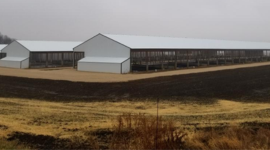 | Protecting Ecosystem Services in Southeast Iowa ALUS, an international farmer-led program, seeks to build resilient agriculture with nature-based solutions. These projects, such as wetland protection and native plant restoration, help agricultural communities prepare for extreme weather events while enhancing local biodiversity. In March, southwest Iowa farmer Seth Watkins and Golden Hills Resource Conservation and Development's Cara Marker-Morgan worked to bring ALUS to the state. The program will help Southwest Iowa farmers create and protect ecosystem services, while addressing Iowa’s unique environmental challenges related to soil health, water quality, and habitat restoration. Iowa’s native trees, shrub, and grassland prairies make up less than 1% of the current land use, primarily due to the dense, high-producing farmland that blankets the state. By reintegrating tallgrass prairies and native habitat to Southwest Iowa’s agricultural land, the ALUS will work with farmers to address soil erosion and nutrient run-off. “Adding tallgrass prairie to the working landscape can help address some of the environmental challenges we have in Iowa, like soil erosion and nutrient run-off,” says Seth Watkins of Pinhook Farms. “They’re resilient to drought and poor soil conditions and provide habitat for a variety of wildlife, like pollinators, beneficial insects and birds." Read the entire story about ALUS's project in Iowa here. |
|
|
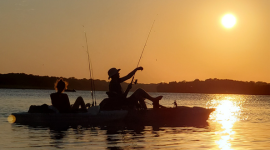 | Stop Aquatic Hitchhikers this Summer Prior to the Fourth of July holiday weekend, the Iowa Department of Natural Resources (IDNR) issued a reminder for all boaters to check and clean their boats from unwanted aquatic hitchhikers. Aquatic hitchhikers include invasive, non-native plant and wildlife that can infest a body of water. These hitchhikers can find themselves attaching to the bottoms of boats, bait buckets, and even swimmers themselves. They then transport outside of the water body and can be reintroduced to another source. Invasive species can cause serious consequences to the natural ecosystems present in the water. They can also make the water unusable for boaters, anglers, swimmers, and paddlers. The IDNR recommends the following to prevent aquatic hitchhikers from fetching a ride: - CLEAN any plants, animals, or mud from your boat and equipment before you leave a waterbody.
- DRAIN water from all equipment (motor, live well, bilge, transom well, bait bucket) before you leave a waterbody.
- DRY anything that comes into contact with water (boats, trailers, equipment, boots, clothing, dogs). Before you move to another waterbody either: Spray your boat and trailer with hot or high-pressure water; or Dry your boat and equipment for at least five days.
- Never release plants, fish or animals into a water body unless they came out of that waterbody and always empty unwanted bait in the trash.
Read the entire IDNR news release about aquatic hitchhikers here. | |
|
|
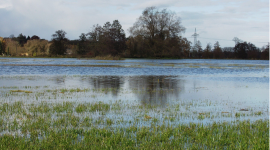 | How NOAA Predicts Extreme Weather Amidst catastrophic flooding and prolonged heat waves in the Midwest, a much larger storm is brewing along the equator. This summer ushers in a ‘La Niña’, an atmospheric phenomenon that results in more frequent, stronger hurricanes along the Atlantic. The National Oceanic and Atmospheric Administration (NOAA) forecasts between 17 to 25 significant storms this year, with 4 to 7 with potential to become major hurricanes. Just this past week, Hurricane Beryl caused extreme damage to islands in the south Caribbean, an early warning for future storms. There has been no other storm this significant this early in the La Niña season ever recorded. NOAA’s forecasts rely on complex models that can provide insight on flood mapping, storm predictability, and hurricane tracking. These models help public officials report to emerging threats and alert the public of imminent danger. In abnormally threatening hurricane conditions, these forecasts are even more valuable. Funding from the Infrastructure Investment and Jobs Act support this research, as well as respond to issues like flooding, algal blooms, and other aquatic issues throughout the United States. According to NOAA, establishing the ‘New Blue Economy’ is necessary for coastal resilience and climate adaptation. Over 40 million people reside in America’s coastal communities, with countless others overseas in the Caribbean and Latin America. NOAA’s forecasting tools are essential to protect the lives of those vulnerable to hurricanes and inclement weather. Create a free account at the Water Program Portal to read the entire article. |
|
|
| | 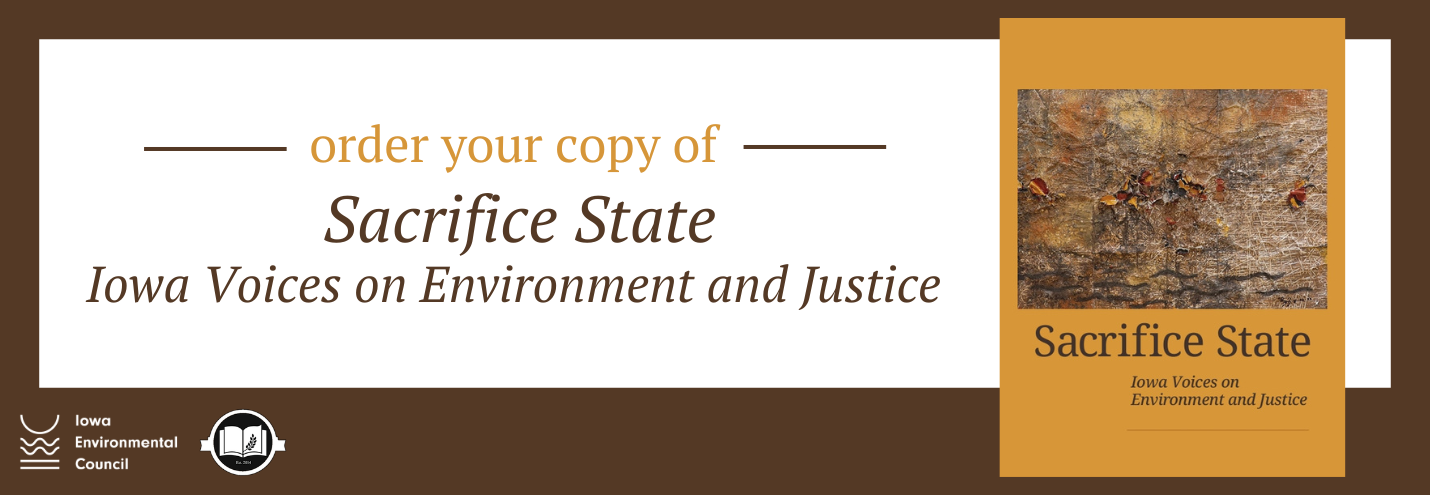 | | What's new in Iowa's water news: |
|
|
| | | 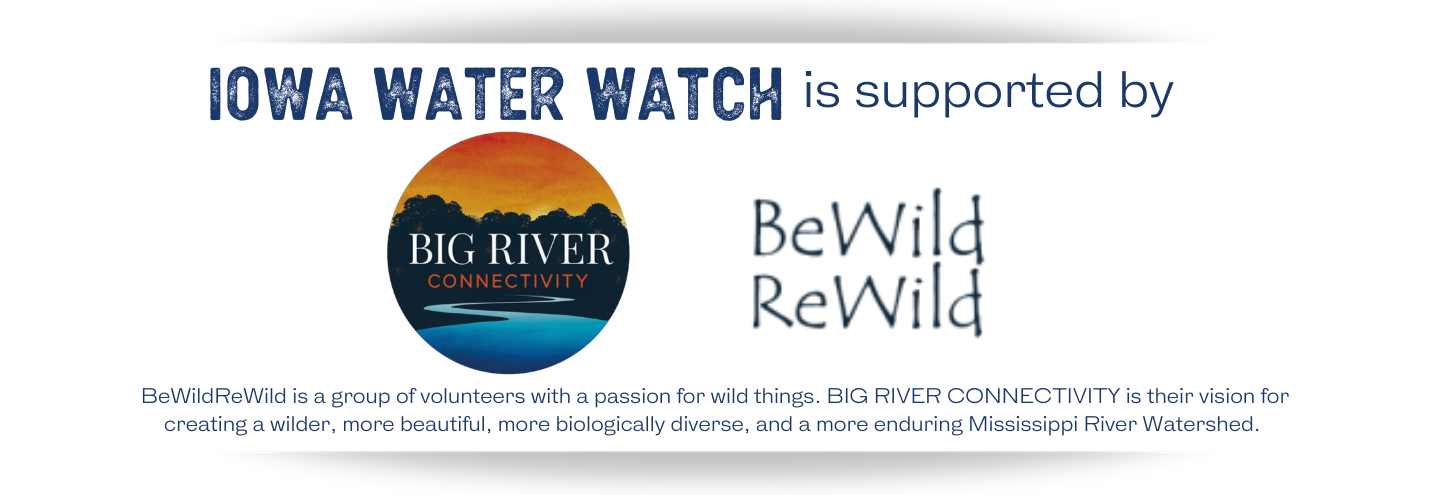 | | | Iowa Environmental Council
505 Fifth Ave., Suite 850
Des Moines, Iowa 50309-2317
515-244-1194 | iecmail@iaenvironment.org |
|
|
|
|
|